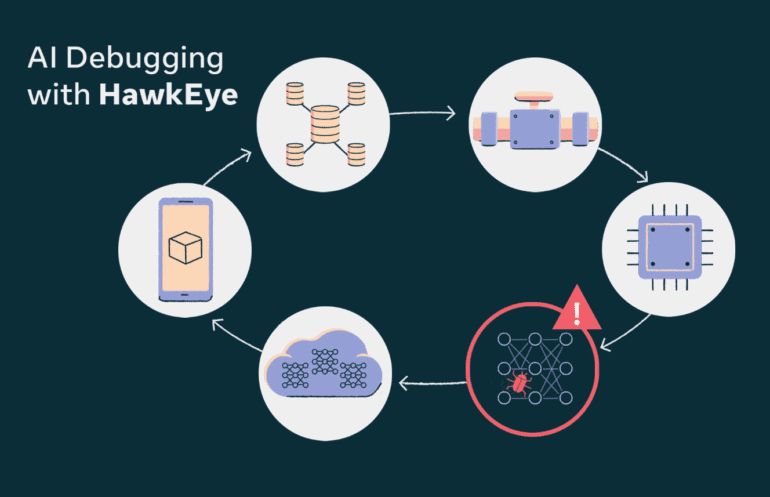TL;DR:
- Meta has introduced HawkEye, a toolkit designed to address the challenges of debugging machine learning (ML) models at scale.
- HawkEye streamlines the monitoring, observability, and debuggability of ML-based products, which is crucial for Meta’s offerings.
- Traditional debugging at Meta required specialized knowledge and extensive coordination, often relying on shared notebooks and code.
- HawkEye introduces a decision tree-based approach, reducing the time spent on debugging complex production issues.
- It empowers both ML experts and non-specialists to triage issues with minimal coordination.
- HawkEye’s operational debugging workflows systematically identify and address anomalies in top-line metrics.
- It isolates prediction anomalies to specific features, using advanced model explainability and feature importance algorithms.
- Real-time analysis of model inputs and outputs helps identify the features responsible for prediction anomalies.
- The streamlined approach significantly reduces the time from issue identification to feature resolution.
Main AI News:
In the realm of machine learning (ML) research, Meta has encountered the formidable challenges of debugging at scale, prompting the creation of HawkEye—an exceptional toolkit that adeptly tackles the intricacies of monitoring, observability, and debuggability. Given that ML-based products lie at the heart of Meta’s offerings, the intricate landscape of data distributions, numerous models, and ongoing A/B experiments presents a formidable obstacle. The core issue revolves around the expeditious identification and resolution of production-related problems, a task that significantly impacts the reliability of predictions and, by extension, the overall quality of user experiences and monetization strategies.
Traditionally, debugging ML models and features within Meta necessitated specialized expertise and extensive coordination across various departments. Engineers frequently relied on shared notebooks and code for conducting root cause analyses, a process that consumed considerable time and resources. Enter HawkEye—a groundbreaking solution that introduces a decision tree-based methodology, revolutionizing the debugging landscape. In stark contrast to traditional approaches, HawkEye dramatically slashes the time required to address intricate production issues. Its debut signifies a paradigm shift, empowering both ML experts and non-specialists to efficiently handle issues with minimal coordination and external support.
HawkEye’s operational debugging workflows are meticulously crafted to offer a systematic framework for detecting and rectifying anomalies in top-line metrics. This toolkit eradicates anomalies by pinpointing the exact serving models, infrastructure elements, or traffic-related components responsible. The decision tree-guided approach then homes in on models exhibiting prediction degradation, enabling on-call personnel to assess prediction quality across diverse experiments. HawkEye’s prowess extends further to isolating suspect model snapshots, streamlining the mitigation process, and expediting issue resolution.
The true power of HawkEye resides in its ability to pinpoint prediction anomalies within specific features, harnessing cutting-edge model explainability and feature importance algorithms. Real-time analysis of model inputs and outputs facilitates the computation of correlations between time-aggregated feature distributions and prediction distributions. The end result is a ranked list of features responsible for prediction anomalies—an invaluable resource for engineers seeking swift issue resolution. This streamlined approach enhances the efficiency of the triage process, markedly reducing the time from issue identification to feature resolution, representing a significant leap forward in the realm of debugging.
Conclusion:
HawkEye represents a significant advancement in ML debugging, enabling Meta to streamline its processes, reduce debugging time, and enhance the efficiency of issue resolution. This development positions Meta as a frontrunner in the market by ensuring the reliability of its ML-based products and improving the overall quality of user experiences and monetization strategies.

